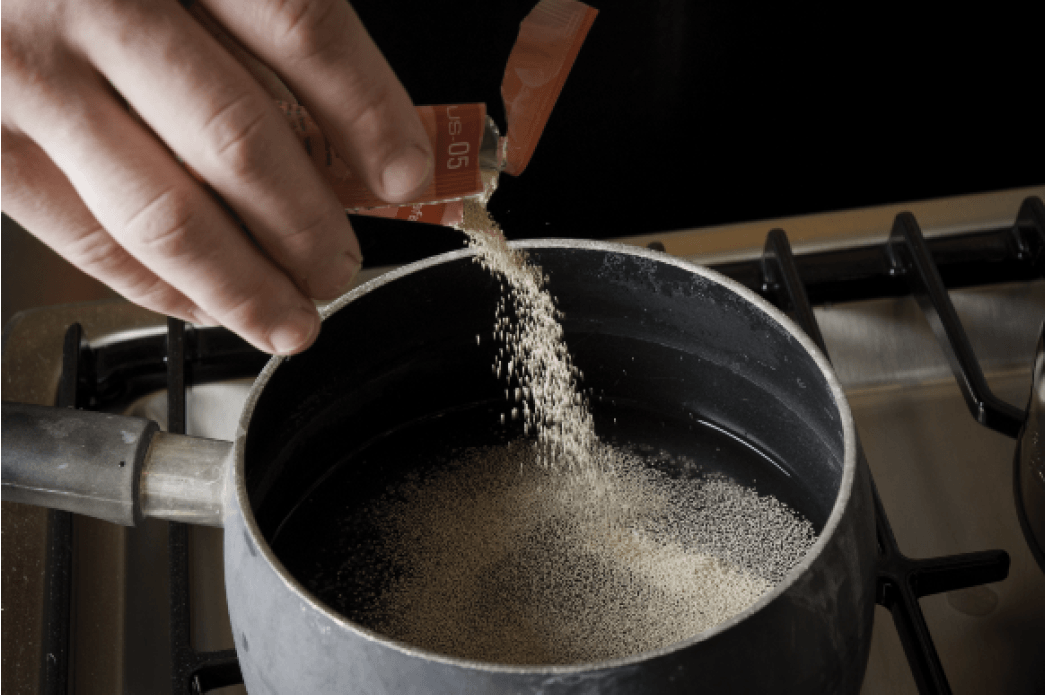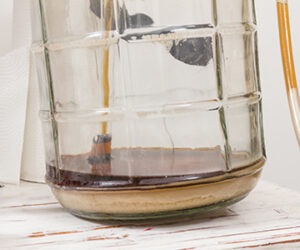Brewers’ Lingo – Understanding Yeast Talk

Wort Attenuation
Let’s start with the word attenuation — there are a few definitions found in the Merriam-Webster Dictionary, but the definition brewers utilize refers to a lessening or reduction in value. During fermentation, yeast are attenuating the malt’s sugars and we brewers notice this reduction when we measure the gravity (density) of the wort and beer before, during, and after fermentation.
Brewers can assess a specific yeast strain’s ability to attenuate a specific wort by simply subtracting the final gravity from the original gravity, then dividing the difference by the original gravity. Each yeast strain has a range of attenuation, which is variable because different worts have varying levels of fermentability. Measuring attenuation is often done by homebrewers and is called the apparent attenuation. Luckily for us, yeast companies will provide apparent attenuation range on their website, so brewers can gain an understanding of a yeast strain’s attenuation performance before they purchase.
Yeast Flocculation
Flocculation is a term that comes from the old English word flocc, meaning to crowd or band together according to the Merriam-Webster Dictionary. Brewer’s yeast tend to clump together once their job of fermentation is complete and thus drop out of solution, so the term was applied for yeast dropping or settling out of solution after fermentation. (There are actually some yeast strains that will rise to the top of the fermenter and need to be removed by top cropping — see section below.)
Different yeast strains have varying levels when it comes to their capability to band together. Some strains will flocculate almost too quickly, possibly leaving the final beer under-attenuated and sweet if not handled correctly. Other strains will almost never flocculate and leave the beer with a yeast haze that is often a detriment to the final product. Brewers can avoid this by adding post-fermentation fining agents to the beer to help promote yeast flocculation. Finings such as isinglass, polyclar, and gelatin are just a few reagents that brewers will utilize to promote yeast settling.
Yeast Cropping/Harvesting
The term cropping is an agricultural term used to signify “a batch or lot of something produced during a particular cycle” according to the Merriam–Webster Dictionary. In that sense brewers are harvesting yeast from one fermentation cycle to ‘seed’ the next batch of beer with yeast. Brewers often refer to this as re-pitching yeast as well. Different yeast strains and fermenter shapes dictate what specific harvesting technique the brewer will utilize in order to crop their yeast, but it is a popular technique among both professional and homebrewers.
Yeast Pitching
The term pitching yeast has a more obscure source since the word pitch has so many definitions, but the general idea is that brewers are casting or directing the yeast into the wort. Microbiologists use the term inoculate to describe this introduction. Yeast pitching can be as simple as sprinkling a packet or two of dry yeast on top of the wort or as complicated as sourcing yeast from a beer and growing that yeast up in multiple steps in order to ferment a full batch of beer from it.
Many brewers often use a recommended number of yeast cells per milliliter per °P (sugar level) to determine approximately how much total yeast to pitch. For more on approximating yeast pitch rates, check out “Learn the Rules of Pitching” — December 2017 or for more advanced concepts, “Yeast Propagation and Pitching” — in the March/April 2018 issue.
Lag Period
Microorganisms such as brewers yeast have an exponential growth curve when they start to reproduce — meaning one becomes two, two becomes four, four becomes eight, and so on until resources become scarce. The lag period is the time in between the yeast pitch and apparent signs of fermentation. This period can sometimes be an anxious time for new brewers who are anticipating bubbles from their airlock.
The lag period is basically an adjustment phase for the yeast, as they adapt to their new, high-sugar environment. The yeast are growing at this point, but just not reproducing yet. They are readying themselves to begin the reproduction phase, which we know as the growth phase. The wort is also becoming saturated with carbon dioxide as the fermentation is commencing and the yeast begin to produce CO2. The lag period can sometimes take a while, especially if the yeast pitch was low, so patience may be required. Always keep an extra packet of dry yeast on hand just in case the lag period is too long as there will be competing microorganisms that are going through a similar lag period as well and we want to make sure the brewers yeast holds the upper hand.


